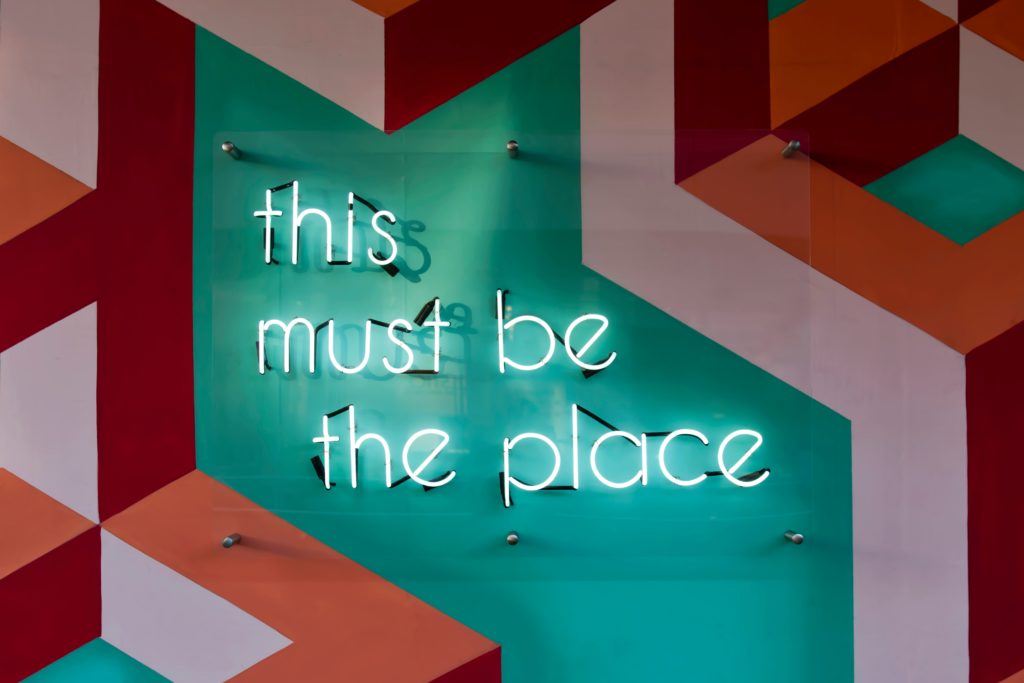Boundaries are the newest hot topic in the mental wellness space. Entering my fifth (!!) year in business, I’ve run the gamut with streamlining and fine-tuning my systems throughout my entrepreneur journey, and I’ve come to find that it all starts with boundaries. “Make more boundaries for yourself!”, “#boundaries”. These are sentiments we see in the online space every day. We all know they’re important, but how do you figure out where to start? What do work boundaries really look like in practice, and how do you implement them?
Today I’m pulling back the curtain on the five specific work boundaries I’ve figured out make the most difference in my business. By the end of this article, you’ll have examples from all corners of my business, and inspiration for creating your own work boundaries. Who knows, you might even take a page from my playbook!

1. Calendar availability for calls/work hours
I have clear business hours stated in my client contracts, and fiercely protect my evening time as an opportunity to recharge myself and pour into my personal life. Because of that priority, I know I can only accept calls within a certain period of the day, and my calendar availability reflects that. This availability is pretty much the same across all the types of ones I use: everything from my consults to my intensive strategy meetings. I don’t want to take meetings after 6:00 PM, so my last meeting of the day that someone might be able to schedule is 5:00 or 5:30, depending on the type of meeting length.
2. Contract clauses
If you’ve never thought of it this way before, allow me to be the first to say it: each clause in your contract is a boundary. In each clause, you’re saying, “If this happens, then I will respond (or not) in this way.” I know contracts sound stuffy (or maybe scary), but they allow you to set healthy expectations with the people you work with so everyone knows what’s going to fly and what’s not. And don’t feel self-conscious about having a long contract – mine is hefty AFFFFF but I know I have every single one of my bases covered and all of those boundaries are articulated, so I can rest easy.

3. Silencing notifications
Whew, this is a big one for me when it comes to work boundaries. Of all the possible notifications I could be receiving from the endless apps and programs I use, 95% of them are turned off completely on all devices. This is because I know that those notifications are going to do nothing but distract me (whether or not I click into them!). This is especially helpful for your non-work hours. Turning off all my notifications, especially email (and social media, if you have those apps on your phone), puts ME in control of how I’m spending my time, rather than being at the mercy of the temptation of that notification.
Choosing not to receive notifications is like choosing not to keep alcohol in the house if you struggle with unhealthy habits around it. You just take the option of engaging with it out of the equation, because we all know how weak our willpower is under those very big temptations. (And if you don’t believe me, answer honestly: when was the last time you got an intriguing email notification and DIDN’T immediately click into it?)
4. Only opening email at a specific time of day, ONCE a day
Similar to notifications, email is a huge time-suck that does nothing for me (or any of us). Yes, email is an important method of communication, but I promise: it does not need to be and should not be open in front of you all day. Email is an easy way to trap yourself into thinking you’re doing ‘productive’ work; when in reality, answering emails is a very shallow/surface level work task. It’s not the thing that’s moving your business forward in a meaningful way.
Because I recognize this, there are two work boundaries I keep around email:
- I NEVER look at it in the first couple hours of my work day. Doing so puts me straight into that shallow-work headspace and almost immediately evaporates any chance of starting my day off on the right foot with meaningful, deep, creative work (you know, the stuff that actually pushes my business forward – like writing this article! Guess what? It’s 12:13 PM and I don’t plan on opening my inbox for a couple more hours).
- I only check my email once a day. Keeping it open in the background not only distracts me from my important work, but being instantly accessible by everyone makes me beholden to them. They hold the power over my day instead of me. This goes back to the first availability boundary: if you’re regularly answering people’s emails relatively quickly (within an hour or two, because you see it come in and think, ‘why not answer now? I have it open and it’ll be fast. Plus, then it’ll be taken care of and I won’t have to worry about it later.’), pretty soon they’re going to start to expect that from you. Wanna know what else? This phenomenon has a real name: telepressue. A quote from the article I linked above says, “it refers specifically to the anxiety associated with email and the perceived pressure to quickly respond.” Food for thought. In this scenario, being constantly available means you’re taking power over your day and headspace away from yourself – and giving it to those people in your inbox.

5. Communicating my prime focus time with my spouse
The Problem
As self-employed business owners, we have the ability to perform our jobs from anywhere, which usually means working from home. And thanks to the pandemic completely changing the landscape of our collective work life, our 9-5er (or entrepreneur) spouses are often working at home as well. On one hand, this is a really beautiful thing that can allow for more quality time spent together, with more collective flexible schedules and no commutes. On the other hand, this means being constantly available to each other, which can result in Distraction City if you aren’t careful.
My husband and I love hanging out together, and we’re in constant contact throughout the day (often even texting each other cute pics of our cats from across the house). While we work in separate rooms, our offices share a wall, which means it’s very easy to pop over to talk about or ask mundane things throughout the day. Normally this is fine, but after a while I noticed that he would come into my office in the middle of me being in a flow zone and distract me. And, if you’ve read this article about the things that makes my business successful, you know how much of a problem distractions can be!
The Solution
After thinking about how to resolve this, I ended up on a very simple strategy: hanging a door sign. I custom made this in Canva, printed, and laminated it to hang on my door handle just like a hotel room during my focus blocks (and removing it when I was done). But here’s the most important part: simply hanging it was not enough. Sometimes (but not always), he would ignore it and come in anyway to ask about or show me something.
After another while of this, I realized what else I needed to do: sit down with him and set a boundary that when I had the sign on the door, I did not want to be disturbed, period. I brought him into my journey with distractions and communicated how difficult it was to get back into flow when he ignored the sign, and asked for his help in supporting me.
Presto! That did the trick. Not only did he need to know the what, but he also needed to understand the why before it all clicked.
Even if you don’t have the option to work behind closed doors, you can still employ this strategy (and I’d recommend doing it with noise-canceling headphones!). Figure out what specific hours or times of day you do not want to be disturbed, and communicate that desire to your partner. When everyone on the team understands the objective and is on the same page about it, your success will be inevitable!

You made it to the end!
Whew, that was a big deep dive! I love talking about nitty gritty aspects of business like this, and I hope that getting to take a peek at what goes on behind the scenes of my business inspires you to create your own work boundaries. What I know to be true is that if we do not set these limits for ourselves, the people and things in our life will overrun us. As they say: give them an inch, and they’ll take a mile. Put up a reinforced STOP sign around that precious inch, and you’ll be well on your way to being a boundary pro.
View comments
+ Leave a comment